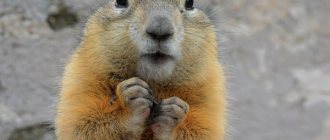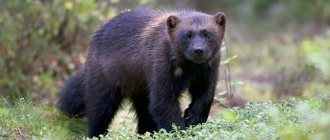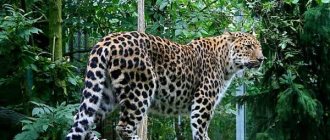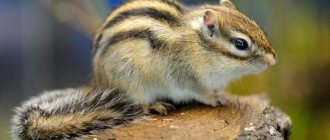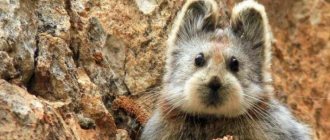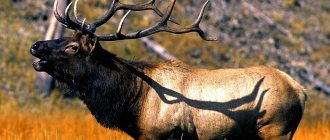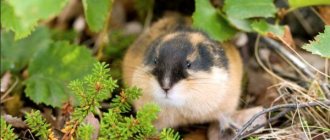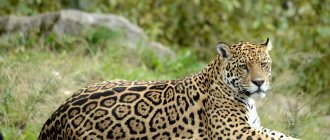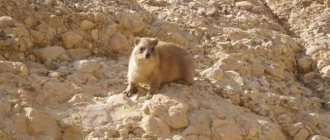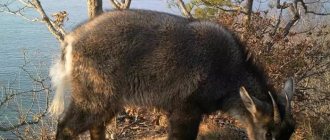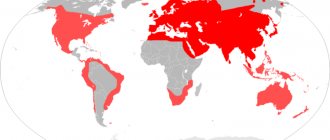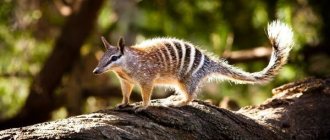The gopher is a rodent from the squirrel family, which includes several closely related genera. Small and rather cute animals inhabit the territories of North America and Eurasia. In some countries, gophers are considered a real disaster and are oppressed in every possible way, while in others the animals are given protected status.
Such an ambiguous attitude towards rodents arose because of their love for cereals; little robbers make real invasions of agricultural fields and can practically destroy the crop.
Moreover, very little is needed to feed one individual; thrifty animals put most of it in winter pantries.
general characteristics
The size of the animals strongly depends on the species; in the wild there are individuals from 15 to 40 cm in length, with a body weight from 150 g to one kilogram. Moreover, males of all subspecies are much larger than females.
Gophers have an elongated and flexible body, thanks to which they can fit into almost any crevice. The hind limbs are slightly longer than the forelimbs. The paws have five toes with well-developed and slightly curved claws. The front legs can be clenched into a fist, so the animals can hold food or other objects. The tail, depending on the subspecies, can be from 4 to 26 cm.
The head of gophers is small, proportional to the body and slightly elongated towards the muzzle. The ears are semicircular, small in some species and almost invisible under a layer of fur. The eyes are small in size and the lacrimal glands produce a large amount of fluid, which helps cleanse the organs of vision from dust and debris. Animals have poor eyesight, which is compensated by good hearing and smell.
Some subspecies have well-developed cheek pouches, with the help of which the animals can carry fairly large volumes of food into their pantries.
The mouth is protected by skin folds on the sides; the front incisors grow throughout the animal's life.
All types of gophers hibernate in winter and sometimes in summer. But not all animals make winter reserves; some members of the family survive thanks to fat accumulation.
Elena
Ask a Question
Question to the expert
What sounds do gophers make?
Gophers primarily whistle, using different pitches and adjusting the volume. By sound, animals can determine the degree of danger or recognize relatives. The whistle can be abrupt, drawn-out or similar to the chirping of a bird. Gophers can also squeak, scream and even growl.
The color of gophers, depending on the subspecies, can be sandy, red, gray, pockmarked (variegated) or reddish-brown. The fur often has spots, stripes or zoned areas of color. Often the throat, chest and belly are painted in lighter colors, and there is a black rim around the eyes.
The summer coat of the animals is silky without undercoat.
By winter, rodents molt, their fur becomes coarser and denser. A warm undercoat grows under the guard hairs.
Life expectancy in the wild is from 2 to 4 years, but sometimes there are individuals that live 6–8 years.
Kinds
The following types of ground squirrels living in Russia include:
- Yellow or sandstone
They grow up to 38 cm in body length and weigh 0.8 kg. The habitat of the desert animal, the gopher, determines its color - solid sandy with dark splashes. The animal can be found in Uzbekistan, Kazakhstan, Turkmenistan, and in the areas of the lower reaches of the Volga.
Leads a solitary life and does not form settlements. Because of this, he is overly cautious. Before leaving the hole, it looks around the surroundings for a long time. During feeding, it adopts postures depending on the vegetation. In tall grass it eats standing in a column, in low grass it eats crouching to the ground.
Sandstones are often the target of varmints. Although sport hunting for rodents involves fighting vectors and protecting farmland from destruction, yellow gophers are hunted in the spring for their beautiful fur, and their fat is used for culinary and medicinal purposes. The sandstone differs from other species of its relatives in having the longest hibernation, amounting to 9 months.
- Big reddish
Slightly smaller than the red ground squirrel, the maximum body length is 33–34 cm. The back is golden brown with rusty spots, red sides, gray belly. Red spots are clearly visible above the eye sockets and on the cheeks. Body weight reaches 1.2–1.4 kg.
Among other species, the large ground squirrel stands out for its active lifestyle, migrates in search of food, and swims well. There are no earthen mounds (gopher holes) in front of the burrows, of which there are up to 10 per site, which is not typical for rodents of this genus.
The distribution area is Kazakh and Russian steppes with forbs, forest-steppes. Animals are less common at the edge of the forest, along roads. The animals are able to live in bushes, where high vegetation makes it difficult to see the surroundings even in a columnar position.
The great gopher is not a small or endangered species. On the contrary, it causes significant damage to agricultural enterprises specializing in growing grain crops. Like other species, it spreads infectious diseases.
- Small
The back is gray-brown or earthy with yellowish patches. The parietal and occipital parts of the head are of more saturated tones, the chest is white, the sides are red. The average body length is 21 cm. The tail is small, only 4 cm. The natural biotopes of the small marmot in Russia are the flat steppes of the Volga region, low-mountain meadows of the Ciscaucasia. The animal avoids places with high forbs.
Each individual is content with one burrow. The rodent does not stock up. It is considered a carrier of eight dangerous diseases that can cause an epidemic. Ruthlessly destroys cereals, melons, and forest planting material. Despite the damage caused, it is listed in the Red Book of Crimea.
- Caucasian or mountain
The body is 23–24 cm long, the color of the back is brown, brown with yellowness or with the addition of black hairs. The belly and sides are gray. The pattern is more pronounced in young animals. The distribution area includes meadows of the Elbrus region, steppes sown with cereals, glades overgrown with juniper or barberry, and floodplains of Caucasian rivers.
If there is a ground squirrel in the forest , it is a mountain species. Unlike its relatives, who prefer to settle in open spaces, or at least on forest edges, the Caucasian ground squirrel can be found in a forest with tall, middle-aged pines.
Animal individualism extends only to housing, but not to feeding areas, where they eat grass together with other representatives of the species. The mountain gopher poses a danger to domestic animals as a spreader of plague.
- Mottled
The unplowed steppes of the Eastern European Valley, forest-steppes, pastures of the western regions of Ukraine and Belarus are the area of distribution of small animals, weighing no more than half a kilogram, from 17 cm long and with 3-centimeter tails. The color is speckled, which gives this species its name.
The main color of the back is brown or brown. The spots can be white or yellow, the back of the head is pockmarked. The abdomen is gray with yellowish tint, the chest is light. The closer to the South the speckled ground squirrel , the paler the color.
The coat is short, sparse except for the tail. On the large head, large eyes with a white rim stand out. The ears are practically invisible. Rodents live in settlements and form hybrids with the small gopher.
- Daursky
Representatives of the species have a light color: the back is sandy-gray with barely noticeable ripples, the belly is fawn, the sides are gray with a hint of rust. The average body length is 20 cm, the largest individuals have 23 cm.
It forms settlements in the steppes of Transbaikalia, hence the second name - Transbaikal gopher. A frequent visitor to household plots, summer cottages, pastures, and near farms. It settles along roads or near railways, occupying someone else's hole.
Lives independently and is not included in group settlements. During the mating season, the Daurian ground squirrel is able to travel 1.5 km. It digs holes every year with no emergency exits or gopher holes. Before hibernation, it masks the entrance hole with turf.
- Red-cheeked
The species is widespread in the south of the Urals, the Caucasus, Western Siberia, and Kazakhstan. The gopher gets its name from the large rusty or brown spots on its cheeks. In terms of size and weight, it falls into the medium category.
The peculiarity of the red-cheeked rodent is that with a body length reaching 26–28 cm, it has a disproportionately small tail measuring 4–5 cm. The upper part of the body is golden-brown in color with lighter rowan ridges. The tail is golden, monochromatic. The red tones on the sides characteristic of other species are poorly visible or absent altogether.
The red-cheeked ground squirrel is distinguished by its small, blunt-snouted head, large teeth and eyes. Most of the habitats are feather grass and forb steppes. Occasionally found in forest-steppes and mountain meadows, no higher than 2 thousand km above sea level.
The closer to the south, the smaller the animals become, and the color fades. Rodents of the species form colonies. They harm cereal crops and garden vegetation. Malicious carriers of encephalitis and plague.
- Long-tailed
The Far East is the region of distribution of a large species of gophers, whose body reaches a size of 32 cm and whose tail is half as long. The weight of the male is half a kilogram, the female is 100 g less. There are whitish specks visible on the golden-brown back. The sides are red, the belly is yellow, the head, with more pronounced ears than other species, is darker than the back.
The animals live in low mountains, forest-tundra, steppes, and rare pine forests where steppe grasses grow. Prairie dogs dig complex burrows with layers for different purposes. The sounds made by long-tailed ground squirrels are compared to the chirping of a magpie. They go into hibernation, which lasts more than six months, after the first snow.
- Beringian or American.
Ground squirrels of this species in Russia are common in Kamchatka, where they are called Eurasian squirrel, in Kolyma, and Chukotka. They prefer to settle on agricultural lands near settlements, but are also found in the wild.
The body is up to 32 cm long, and the tail is up to 12 cm. The back is golden-brown with white spots, the head is of more saturated tones. The sides and belly of rodents are bright red in color. Due to the cold climate, rodents prefer animal food (insects). They gladly accept treats from tourists and raid their sites. They live in colonies, digging branched burrows where space is reserved for supplies that are eaten after awakening from hibernation.
Habitat
Ground squirrel populations inhabit North America and are distributed throughout Eurasia. Basically, animals prefer to settle in the steppe, forest-tundra zones, meadows and fields. Some species live beyond the Arctic Circle, high in the mountains and even in deserts.
The animals are not afraid of people and often settle on the borders of agricultural land, near warehouses with grain and hay.
Where does it live?
— Advertising —
Ground squirrels are found in steppe, forest-steppe, meadow-steppe and forest-tundra landscapes of temperate latitudes of the Northern Hemisphere. They live in open areas, in meadow areas of river valleys, in semi-deserts and even deserts, and along mountain steppes they rise to heights of up to 3500 m above sea level.
What do gophers eat?
The main diet of gophers consists of meadow grasses, grains, seeds, fruits, acorns, nuts, larvae and insects. Some species may eat the eggs of birds, small lizards, mouse-like rodents or worms. Animals are not averse to feasting on young shoots of trees and shrubs, and also happily dig up and eat the tender roots of bulbous plants.
During the first half of summer, the animals eat succulent herbs and fruits, and closer to autumn they begin to stock up and gain fat.
Small and nosy rodents carry a wide variety of foods into their burrows. Gophers' supplies may include dry grass, twigs, seeds and other plant foods. But sometimes there are pantries filled to capacity with dry bread, buns and even chocolates. Rodents collect such products near populated areas.
In times of hunger, gophers do not even disdain kitchen waste.
Most of the reserves lie quietly all winter, since the animals very rarely wake up. Pantries begin to empty with the arrival of spring, when animals come out of hibernation and cannot find food outside their burrows.
Nutrition
The diet of gophers includes plant and animal foods. The ratio depends on the place of settlement. The further north rodents live, the more animal protein they require. The most common plant foods include:
- cereals, legumes;
- melons;
- forbs (clover, wormwood, bluegrass, dandelion, knotweed, nettle, knotweed);
- wild onion bulbs, tulips;
- sunflower, oak, maple, apricot seeds;
- young shoots of willow;
- mushrooms, berries.
Depending on the time of year, gophers feed on underground or green parts of plants and seeds. Having reached the vegetable gardens, the animals happily eat carrots, beets, and gladioli bulbs. Animal food in the diet includes:
- insects (beetles, grasshoppers, worms, locusts);
- larvae;
- bird eggs;
- voles, chicks.
When the food supply is insufficient, gophers eat food waste and carrion. Cases of cannibalism have been observed in large settlements.
Reproduction and raising of offspring
Gophers become sexually mature at 1–2 years. Mating occurs once or twice a year, immediately after awakening from hibernation.
Mating season
Recommended by topic
Fox Panda Lynx
The timing of the mating season depends on the climatic zone in which the animals live. Typically the breeding season begins in April or May. The rut lasts about 10–14 days. During this time, the male manages to cover all the females in the adjacent territory. If, after the colony awakens, the temperature outside the burrow is below zero, then mating occurs underground.
During the rut, males start fights, whistle loudly, shout and box with rivals. To find a female, a male can run several kilometers in a day. On the territory of the colony, the main male vigilantly ensures that foreign males do not enter his area. Females do not leave their territory during the mating season.
Duration of pregnancy and childbirth
On average, pregnancy lasts 22–30 days. The first babies are born in mid-April or early May.
Cubs of the American variety can be born between May and June.
Under unfavorable conditions, some embryos freeze and dissolve. This is a natural process that does not have a detrimental effect on the health of the female and other babies.
In one litter, from 2 to 14 babies are born. Weight from 3.5 to 6 g, body length from 3.5 to 5 cm. Gophers are born blind, deaf and bald. The eyes open 7-9 days after birth. The fur grows in about 2-2.5 weeks. Newborn babies feed on mother's milk until 1.5-2 months, but already at the age of one month, the cubs begin to try adult food.
Caring for the Cubs
Female gophers are very caring mothers; they practically do not leave their brood during feeding. When danger arises, the mother literally protects her babies from the predator with her breasts. The female stands in the passage leading to the children, squeaks, waves her paws and tail.
At the age of 20 to 30 days, young gophers leave their burrows for the first time and begin to explore the world around them.
During this period, the mother vigilantly monitors the offspring and protects them from dangers.
While the babies are growing up, the females dig out separate holes for them, in which the babies will live after leaving the mother’s shelter. Sometimes the female herself goes to another hole, and young gophers live in the old one until they go in search of a new home.
Typically, males do not participate in raising the brood, the only exception being individuals living in close groups.
Gophers treat other people's offspring calmly, and while adults may conflict over territory, the cubs are most often ignored.
Description of the rodent
- Body length is 14-40 cm,
- The tail is 4-25 cm long.
- The hind legs are slightly longer than the front legs.
- The ears are short and sparsely pubescent.
Color
— Advertising —
The back is green to purple, often with dark ripples, longitudinal dark stripes, light streaks or small spots. There are light stripes along the sides of the body. The belly is dirty yellow or whitish. In winter the coat becomes soft and thick; in summer it is sparse, short and coarse. There are cheek pouches.
Natural enemies
According to statistics, more than 70% of young animals die in the first year of life. In most cases, the causes of death are long winters, soil freezing, insufficient supplies in the pantry, anthropogenic factors and predatory animals.
In nature, gophers have a lot of enemies; they are hunted by all predatory animals and birds.
The main danger comes from foxes, ferrets, weasels, stoats, domestic dogs and hawks. Most predatory animals hunt gophers in the summer, but foxes and ferrets can dig rodents out from under the snow.
Impact on human life
Gophers are carriers of plague, tularemia and other serious infections that are dangerous to humans, which can lead to disability or death. The main food of the animals is cereals and plant fruits , which is why agricultural lands become places of pilgrimage in search of delicacies. This affects the amount of harvest and provokes people to take measures to exterminate rodents (set traps, gasify burrows, leave poisoned baits).
Some people keep gophers as pets. With skillful training, they are able to perform various tricks and delight their owners. Using their example, scientists are studying the phenomenon of anabiosis (temporary slowdown of life processes in the body under the influence of external factors). Goth fat, which is used in cosmetology and medicine in the treatment of colds and wounds, is also beneficial.
Interesting Facts
At first glance, gophers are ordinary and unremarkable rodents. But their behavior and social structure can surprise even skeptical people.
Interesting Facts:
- If a snake attacks a nesting hole, the female stands up to protect her offspring, regardless of the danger. She blocks the entrance to the hole, screams, waves her tail and makes throws towards the snake. Even after being bitten, the female continues to protect her children and bravely rushes at the enemy.
- Young gophers are the last to fall asleep. Adult males are the first to go into hibernation.
- Adult gophers develop immunity to snake venom.
- The territory of the colony is always protected by gopher guards. When danger arises, the animals emit a piercing whistle, which serves as a signal to other animals.
- Gophers talk to each other using different volumes and tones, sometimes barely audible to humans. So one animal can inform another about danger or mark its territory.
- During hibernation, gophers fall into a deep sleep. In this state, some subspecies are able to survive sub-zero temperatures.
- Some subspecies can hibernate up to 9 months of the year.
- Caring mothers build additional burrows for growing offspring near feeding areas.
- The mouth of gophers is protected by folds of skin that prevent soil from entering the oral cavity while digging holes.
- The smallest gopher weighs only 150 g, and the largest member of the family can gain weight up to one kilogram.
Behavior
Gophers lead a terrestrial lifestyle. They usually live in colonies, in burrows that they dig themselves. The length of the burrow and its structure vary among different species of gophers and depend on their habitat. On sandy soils, the burrows are long, up to 15 m, and about 3 m deep. On dense clay soils they do not exceed 5-7 m. Inside the hole there is a nesting chamber, which the gophers line with dry grass. In case of danger, gophers are known to stand on their hind legs and whistle.
Young animals are active from 9-10 to 15-16 hours, adults leave their burrows twice a day: 1-2 hours after dawn, and from 14-15 hours before sunset. Adult males and females who have not given birth go into hibernation in early July, females after giving birth - in early August, young animals remain active until early September.
Keeping at home
Neither the habits nor the lifestyle of gophers are suitable for keeping at home. Rodents love space. It is difficult for them to get used to a cage or enclosure. Nor will they become tame, like a guinea pig or chinchilla. However, this does not stop fans of rodents who try to tame them in every possible way.
When getting gophers, you should keep in mind that animals are absolutely not suitable for living in an apartment. Here it is impossible to reproduce conditions close to natural ones. In addition, rodents will mark territory, and the smell of their secretions is quite specific.
You can try keeping gophers in enclosures in a private house, provided that they can satisfy the natural need to dig holes. They also need to move a lot - run, jump, gallop. The size of the enclosure for a pair of gophers should be at least 1.5x1.5 meters. Inside you need to place shelter devices - boxes, houses, fragments of pipes.
The diet of domestic animals can be varied. They should be given grain mixtures, ready-made food for rodents, fresh zucchini, sunflower seeds, bananas, apples, and pears. Do not forget what the gopher eats in nature, and give them green grass - lettuce, alfalfa, clover, plantain, dandelion. From time to time you need protein food - mealworms, grasshoppers, crickets. The animals should be fed 2 times a day. The enclosure should have filtered water for drinking.
On the eve of hibernation (at the end of August), the animals should bring fresh straw, leaves, and hay. Rodents use this material to prepare a sleeping bed. During winter sleep, the animals are kept alone. Thin-toed ground squirrels are best suited for keeping in enclosures. They are brought in in groups or in pairs. In captivity, animals live less than expected.
